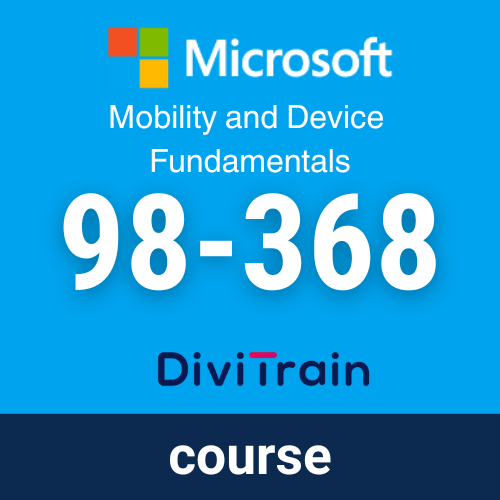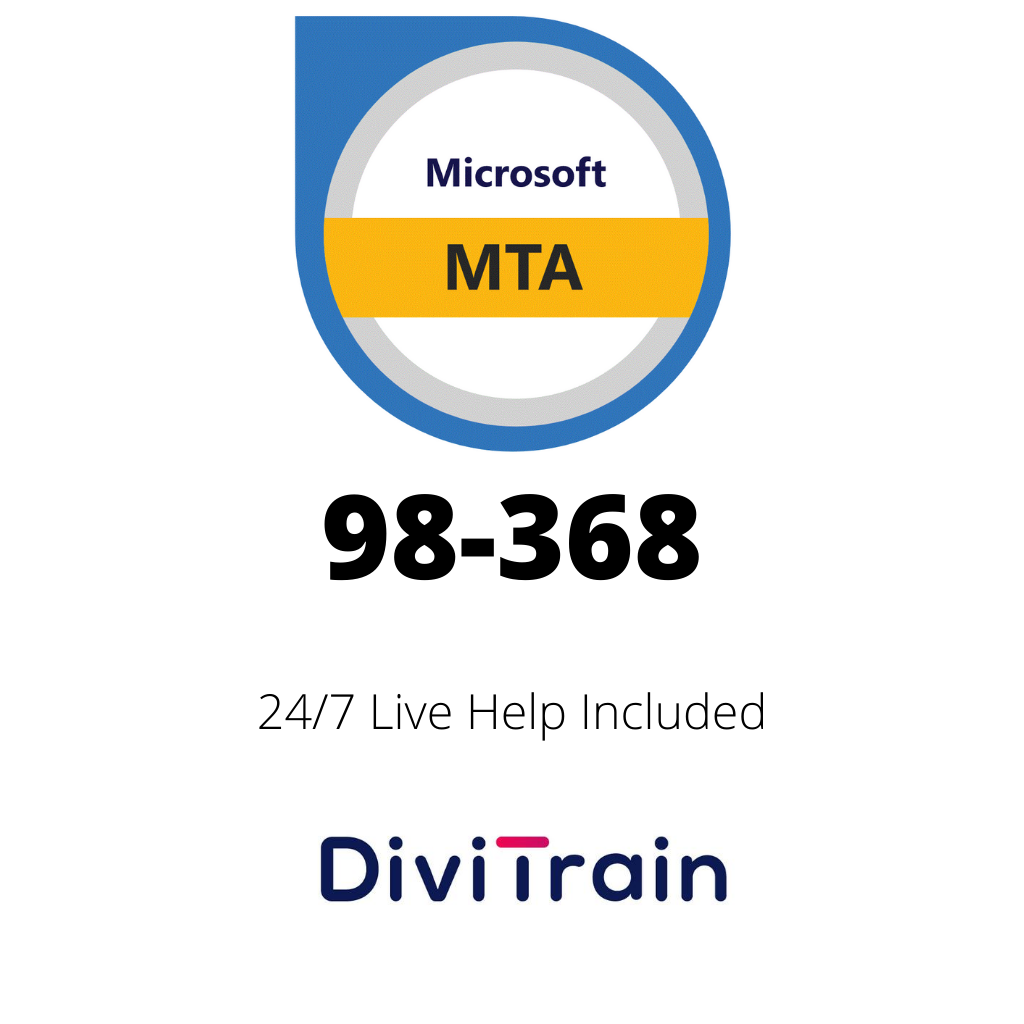DiviTrain - The Pan European IT Learning Provider
Microsoft MTA 98-368: MTA: Mobility and Device Fundamentals | 24/7 Live Help included | 365 Days Access
Microsoft MTA 98-368: MTA: Mobility and Device Fundamentals | 24/7 Live Help included | 365 Days Access
Couldn't load pickup availability
Candidates for this exam have a fundamental knowledge of Windows devices and mobility. Candidates should have some hands-on experience with Windows devices, Windows-based networking, Active Directory, anti-malware products, firewalls, network topologies and devices, and network ports.
Understand device configurations (20-25%)
Configure device options Describe Microsoft account, configure Control Panel, configure system options
Configure desktop settings Configure the Start menu, profiles, display settings, shortcuts, and group configurations and capabilities
Configure drive encryption Configure BitLocker, prepare for file encryption
Configure updates Describe Windows Update, describe app updates, describe device system updates
Understand data access and management (20-25%)
Describe cloud storage services Describe OneDrive, Microsoft Azure storage, OneNote, Outlook, and Office 365 Describe local storage
Describe storage spaces and storage pools Describe file systems Describe FAT, FAT32, NTFS, and Resilient File System Overview (ReFS)
Describe file and print sharing
Describe NTFS and share permissions, HomeGroup, print drivers, and effective permissions; create public, basic, and advanced shares; map drives
Describe data encryption Describe encrypting file system (EFS); describe how EFS-encrypted folders impact moving and copying files; describe BitLocker To Go, a virtual private network (VPN), public key, and private key; certificate services; and SSL
Understand device security (20-25%)
Describe the differences between the Internet, an intranet, and an extranet
Describe the uses of private networks, public networks, host firewalls, network firewalls, and clouds
Describe user authentication
Describe Multifactor authentication, describe smart cards, describe Windows Rights Management Services, describe biometrics and password procedures
Describe permissions
Configure file and share permissions; describe the behavior when moving or copying files from one location to another; describe basic and advanced permissions; describe taking ownership, delegating, and resultant permissions
Describe malware Describe computer viruses, Trojan horses, spyware, and adware; describe antivirus and antimalware strategies
Understand cloud services (20-25%)
Describe the types of cloud services
Describe productivity services, storage services, communications services, and search services Describe Microsoft Intune
Describe Microsoft Intune capabilities, describe selective wipe, describe location settings
Describe Microsoft Azure
Describe virtual machines; describe Azure services; storage tiers, describe disaster recovery, high availability, redundancy, and fault tolerance
Understand enterprise mobility (20-25%)
Describe identity services
Describe Windows Server Active Directory and Azure Active Directory, Microsoft Account, and federation services
Describe business data access Describe Company Portal, describe Work Folders, Offline folders, describe Azure RemoteApp
Describe Bring Your Own Device (BYOD)
Describe device-centric to people-centric IT, describe desktop virtualization, describe Dynamic Access Control policies, describe Windows Rights Management




